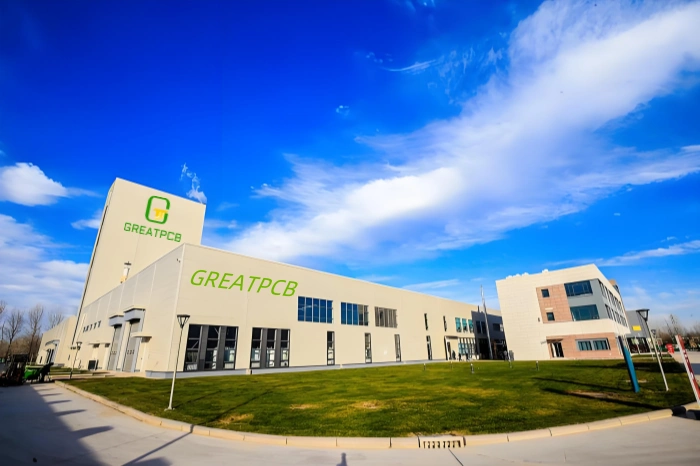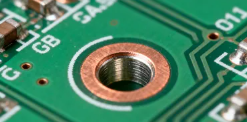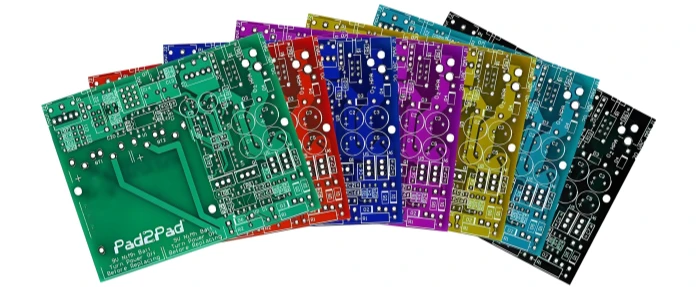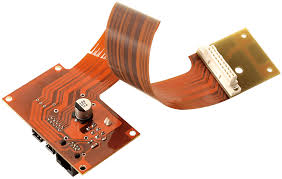PCB Solder Mask

I. PCB Surface Solder Mask Application Technology
The solder mask layer constitutes a permanent dielectric coating in PCB manufacturing. Functionally, this layer prevents solder bridging during assembly, provides environmental protection against moisture/contaminants, and enhances surface insulation resistance (>10⁸ Ω·cm per IPC-SM-840). From aesthetic perspective, it defines the board’s visual signature through color consistency and edge definition.
Historical Process Evolution
Early-generation solder mask application employed screen printing with UV-curable inks, requiring phototooling for stencil fabrication. This method presented operational challenges:
- Pattern distortion from 0.1-0.3mm mesh stretching
- Pad encroachment requiring manual scraping (30-45min/panel rework)
- Limited resolution to 150-200μm line definition
Modern liquid photoimageable (LPI) solder masks revolutionized the process through:
- Direct photolithographic patterning (25-50μm resolution)
- Improved adhesion strength (5B crosshatch test per ASTM D3359)
- 60% reduction in process steps
1. Optimized Manufacturing Sequence
- Phototool fabrication (5μm registration tolerance)
- Tooling hole punching (Φ3.175mm ±0.05mm)
- Chemical cleaning (pH 9.5 alkaline solution @45°C)
- Ink formulation (viscosity 12,000±500cP @25°C)
- Dual-side curtain coating (50-80μm wet thickness)
- Soft bake (65°C ±2°C, 25-35 minutes)
- UV exposure (350-450nm, 300-500mJ/cm²)
- Spray development (1% Na₂CO₃ @30°C, 1.5bar)
- Thermal cure (150°C ramp, 60min total cycle)
2. Critical Process Control Parameters
(1) Pre-Curing Optimization
The soft bake phase achieves solvent evaporation (≤0.5% residual content) while maintaining photosensitivity. Standard parameters vary by material:
| Ink Type | Temperature Range | Time Range | Moisture Content |
|---|---|---|---|
| Epoxy-Based | 65-75°C | 25-35min | ≤0.3% |
| Acrylic-Based | 60-70°C | 20-30min | ≤0.25% |
| Polyimide | 80-90°C | 40-50min | ≤0.15% |
Process Deviation Impacts:
Over-Curing:
o Development resistance increases 30-50%
o Resolution loss exceeding 15μm
Under-Curing:
o 60% adhesion strength reduction
o 0.1-0.3mm mask swelling during development
If too much diluent is added, it will affect the heat resistance and hardening properties of the ink. In short, the adjustment of the viscosity of liquid photosensitive solder mask ink is very important. If the viscosity is too thick, screen printing will be difficult, and the screen will be prone to sticking. If the viscosity is too thin, there will be a large amount of volatile solvents in the ink, making pre-curing difficult. The viscosity of the ink is measured using a rotational viscometer. In production, the optimal viscosity value also needs to be adjusted according to different inks and solvents.
II. Solder Mask Color Variations and Applications
1. Classic Green Mask
This industry-standard option balances affordability with functionality. Its deep green background creates optimal contrast for white component markings, simplifying visual inspection during assembly. Widely adopted in consumer electronics, from computer components to appliance control boards, this color helps reduce eye strain during prolonged technical work while maintaining reliable insulation properties.
2. Signal Red Mask
The vibrant red variant serves dual purposes – its high visibility assists in critical circuit identification while adding aesthetic appeal. Automotive systems leverage this color coding for safety-critical modules like airbag controllers. Gaming peripherals frequently adopt red masking to complement their dynamic product designs.
3. Professional Blue Mask
Preferred for technical equipment requiring a clean visual presentation, the blue alternative matches green in performance while offering design flexibility. High-end audio systems and specialized measurement tools often select this color to convey technical sophistication, particularly when coordinating with product enclosure themes.
4. Cautionary Yellow Mask
Safety-oriented applications utilize yellow’s natural warning associations. Industrial power systems employ this hue to highlight high-voltage zones, while medical devices use it to mark essential components. The color’s inherent visibility accelerates maintenance procedures in complex equipment.
5. Minimalist White Mask
White masking combines aesthetic purity with practical benefits. Its reflective surface assists heat management in compact devices, making it popular for modern smart home products. Lighting systems particularly benefit from its light-diffusing properties while maintaining a sleek appearance.
6. Premium Black Mask
This sophisticated option excels in thermal management for high-performance hardware. Computer components like advanced GPUs utilize its heat-absorbing qualities, while luxury electronics adopt the color for its sleek, professional appearance that resists visible wear.
7. Non-Gloss Green Variant
The matte green version reduces surface reflections without sacrificing durability. Industrial control systems and precision imaging equipment favor this understated finish that withstands frequent handling while maintaining technical readability.
8. Textured Black Finish
Combining matte aesthetics with enhanced durability, this premium option appears in high-end audio gear and luxury wearables. Its subtle surface texture minimizes fingerprint visibility while maintaining thermal performance.
9. Specialty Purple Mask
Design-focused applications leverage purple’s unique visual impact. Limited edition devices and experimental prototypes use this color for distinctive branding, while certain research projects employ it for specialized circuit identification.
III. Circuit Pattern Protection Techniques
Modern PCB manufacturing increasingly adopts liquid photoresist methods for precise pattern definition, replacing traditional dry film approaches in multilayer board production.
Process Overview
Surface preparation → Coating application → Thermal treatment → Light exposure → Resist development → Metal protection → Layer removal → Subsequent processing
Critical Production Considerations
(1) Application Method Selection
While curtain coating delivers superior uniformity, most manufacturers prefer screen printing for its cost-effectiveness in standard precision applications. Dip coating remains limited to niche uses due to thickness control challenges.
(2) Surface Conditioning
Thorough cleaning ensures proper material bonding through combined chemical and mechanical treatments, removing contaminants while activating the copper surface for optimal resist adhesion.
(3) Material Consistency Control
Maintaining proper ink viscosity proves essential – overly thick mixtures complicate application while thin formulations retain excess solvents. Thickness targets vary by application:
- 15-20μm for corrosion protection (dual-layer application)
- 20-30μm for plating resistance (triple-layer application)
Imbalanced thickness risks development issues and material degradation during subsequent processing stages.
Related Posts
PCBA Prototype
November 9, 2025










